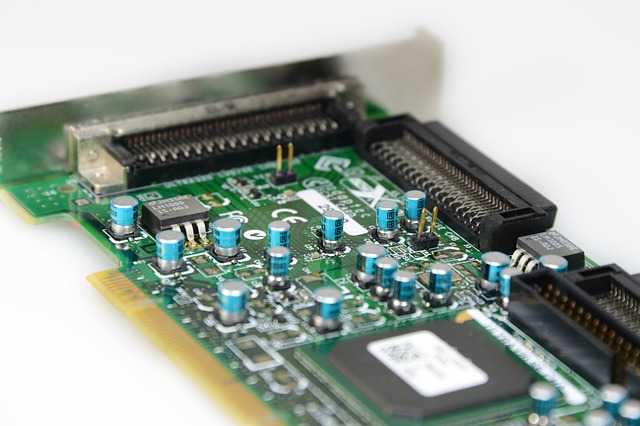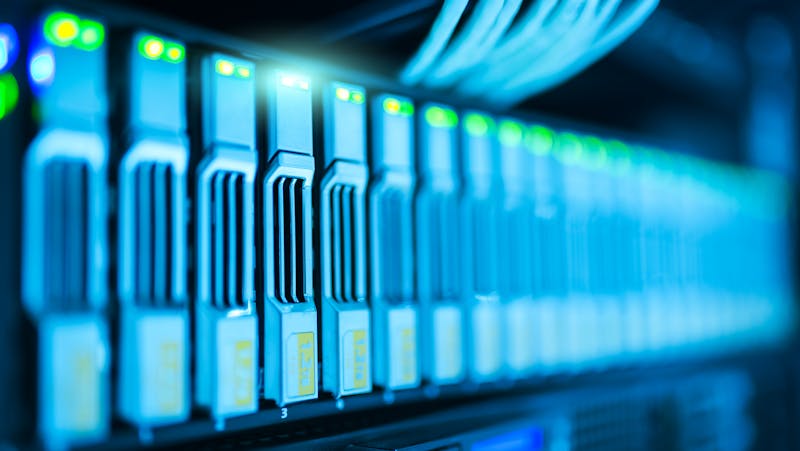Green computing: Protecting the Future
As technologies advance at an unimaginable pace, the realisation that our resources are finite and our future is fragile has focused our minds on the precarious nature of our environment like never before. Global warming, erratic and unprecedented extremes in weather patterns, and the desperate search for sustainable solutions that guarantee our and our children's future make us concentrate our minds and focus our attention more than at any time previously.
Amongst IT professionals, too, it has become apparent that environmentally sustainable systems and habits need to be discussed and disseminated as much as in other areas like transportation, heating, cooling and lighting, manufacturing, and waste disposal. The issue today is green computing.

What is green computing?
Green computing is also known as green technology, by which the use of computers and related resources are as environmentally responsible as possible. Among a number of practices, there is the use of energy-efficient central processing units (CPUs), servers and peripherals. In addition, care is being taken to reduce resource consumption, along with ensuring the correct and safe disposal of electronic waste (e-waste).
Furthermore, there has been a paradigm shift, of late, from pure computing power being at the heart of computer chip design and manufacture to the issue of energy-efficient processing. With carbon footprints and climate change now at the forefront of IT developers' minds, this is where the new competitive focus lies. In one particular example, major developments are occurring in the area of high-performance gaming chips.
Only last week, AMD (formerly Advanced Micro Devices) announced the completion of an energy efficiency study on its own high-performance gaming chip that confirms it is almost three times more energy efficient per watt than its ancestors. The implication for computer gamers or, indeed, those involved in producing or watching high-end video graphics and who are sensitive to climate change issues, is that they can continue to indulge while feeling a little less culpable. It is not only AMD, though, but Intel and other chipmakers who are now competing to make energy-efficient chips and, of course, gain market advantage.
It is not just in chip manufacture, either. A recent report has shown that computers themselves could be far more energy-efficient. The report's author, Pierre Delforge, points out that "computers and monitors are among the biggest energy consumers among electronics. Keeping them running takes the equivalent of 30 large power plants while emitting 65 million metric tonnes of carbon dioxide pollution. Unfortunately, much of that energy is wasted when computers sit idle — particularly with desktops, which draw power from a wall outlet instead of a battery and thus give manufacturers little incentive to optimise energy use".
In effect, greater energy savings and ecological benefit could be obtained if manufacturers of computer hardware were to make simple adjustments so that, for example, idling computers don't use the same amount of energy as when fully in use.
Commenting on the report, Barbara Brady (of GreenBiz Group) writes that "the energy waste — and therefore the potential for energy efficiency — is even a bigger deal for very high-performance computers, using very demanding chips. They continue to draw the power needed for the demanding computing activity of high-performance graphics even as the user stops to get a cup of coffee or slows down processing needs by simply surfing the net or checking email".
No longer the wishy-washy idea of "tree-huggers", green computing is very serious business today. Governments are involved, too, as evident in the Climate Change Agreement (CGA) and the European Union Emission Trading Scheme (EU ETS) which are persuading companies to re-evaluate the way they use their IT resources. Improving energy efficiency has moved from well-intentioned debate to stark reality for most UK businesses.
Furthermore, the Carbon Reduction Commitment (CRC) programme has carbon emission reduction at its heart: the UK target is a reduction by 1.2 tonnes by 2020. It is by using green technology that this mandatory UK standard seeks to improve energy efficiency through an 80% cut in UK carbon emissions by the year 2050. The CRC addresses all forms of energy – electricity, gas, fuel (except transportation) and oil. One immediate consequence of this directive is that companies will urgently need to hire or train up staff skilled in green technology if they are to meet the CRC's mandatory targets. For those wishing to understand the CRC scheme better, there is a handy tutorial: http://www.computerweekly.com/tutorial/Understanding-the-CRC-Energy-Efficiency-Scheme
Government regulation, however, with the best will in the world, forms barely a fraction of all-encompassing green solutions, that need to be modified to achieve minimal adverse consequences for our environment.
To this end, finding and implementing ways to make energy (and consequently, cost) savings at a time of rising fuel prices is no longer only the preserve of corporate businesses, but increasingly a concern for private individuals. Public and corporate opinion has shifted in favour of environmental responsibility for some time but has been intensified more rapidly since climate change has become critical, both as a political and a practical issue.
As an area of human activity that has grown so much and so fast, computing is ripe for realistic environmental savings. While manufacturers are looking at improving hardware, computer users can implement relatively straight-forward practices even with existing hardware. In fact, there is even software to assist us, such as Little Green Genie that enables businesses and individuals to measure, reduce and carbon offset the emissions emanating from their computers.

Practical steps
While much is happening at a macro level, there is plenty that can be done at the micro level. There are practical measures, both easy and user-friendly, that are available to all computer users, whether at work or at home. Consider:
- Wherever it is feasible to do so, utilise alternative (renewable) energy sources for computing workstations, networks, servers, and data centres
- Energy-intensive peripherals should be powered-up and powered-down on a need-to-use basis
- During long periods of inactivity, the CPU and all peripherals should be powered-down
- For energy efficiency, notebook computers trump desktop computers every time
- Whenever possible, do computer-related tasks during conterminous and concentrated blocks of time. Otherwise, leave the hardware switched off the rest of the time
- Replace cathode-ray-tube (CRT) monitors with liquid-crystal-display (LCD) monitors
- Get the power-management features to turn off hard drives and displays after shorter periods of inactivity
- Go paperless wherever possible; otherwise, waste paper should be properly recycled
- Dispose of e-waste legally and responsibly.

Turn that thing off!
Your average desktop computer consumes approximately 8W of electricity per hour when shut down but not turned off. For a PC that is turned off for around 16 hours a day that is equivalent to a waste of 1KW of electricity a week. Remembering to turn off the computer, either at the back or at the wall socket when you aren't using it, results in a huge difference in energy consumption and its impact on the environment.
It is not enough to leave the computer on "standby" or even "sleep" mode, even though that does save quite a lot of power. Even shutting down a desktop computer does not, necessarily, turn it off, because while the power supply to the computer stays on, the motherboard remains partially powered, anticipating the signal to start again from the switch at the front of the computer (not to be confused with the mains power switch). To ensure that a computer really isn't using any power, it must be switched off at the wall socket.
There is more. While the above pointers are practical steps any computer user should take, Christopher Barnett has identified a number of further significant steps to decrease the environmental damage of computing and reduce energy consumption. He lists six:
- Lower power hardware: involves using a lower power processor, onboard graphics, passive cooling (as opposed to fans) and a solid state drive (SSD) or a smaller hard drive than the ubiquitous 3,5".
- Virtualisation: the use of computer software to simulate hardware. It can also be used at File level with file virtualization software enabling frequently accessed files to be stored on high-performance, low-capacity drives.
- Cloud computing: allows software applications, processing power and data to be accessed via the Internet. It also enables everyone to enjoy the benefits of virtualisation.
- Energy efficient coding: a way of saving power through software that doesn't use so much of the hardware.
- Improved repair, re-use, recycling and disposal: unlike most machines, repairing computers or reusing as many parts as possible from broken PCs is highly feasible.
- Less pollutant manufacture: a great many dangerous chemicals go into the making of computers. If hardware producers significantly reduced the use of such substances, it would protect people from exposure and make e-waste more safely recyclable.
With the speed of research and development of which we are now capable, it should only be a few years before the majority of computers will consume less power than is needlessly wasted at the moment.
If you need advice from Bristol computer experts on how to save energy and money through greener computing then please get in touch.






